As a child, Paul Kuntze was already fascinated by ceiling paintings. Whenever he visited an old church, museum, or castle, the first thing he would do was look up. The question of how the painter could create such precise and detailed images, high up on the ceiling, always intrigued him. Kuntze holds the utmost respect for those who were able to achieve such incredible works in the past.
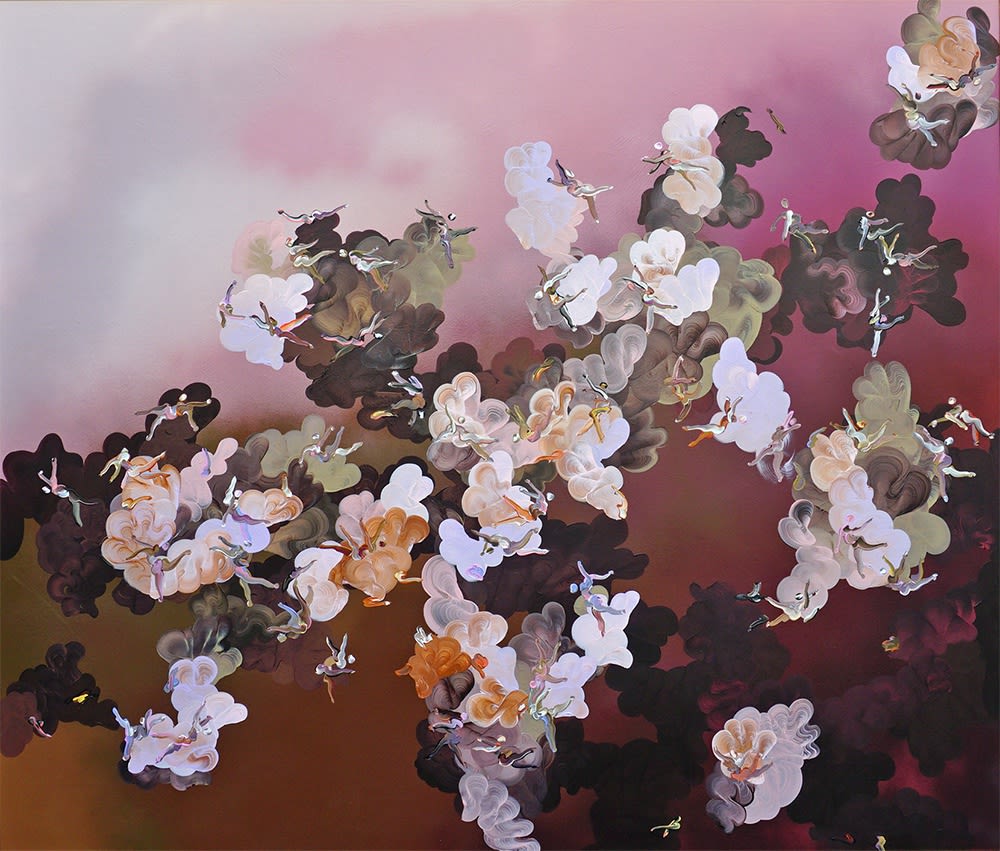
In his series "Modern Fresco," he combines two styles from different artistic eras. Drawing from abstract expressionism, he attempts to depict monumental scenes of the heavens and gods, evoking memories of classical ceiling frescoes from the Baroque period. Rather than fully rendering the scene, he hints at figures and faces, encouraging viewers to engage their own creativity.
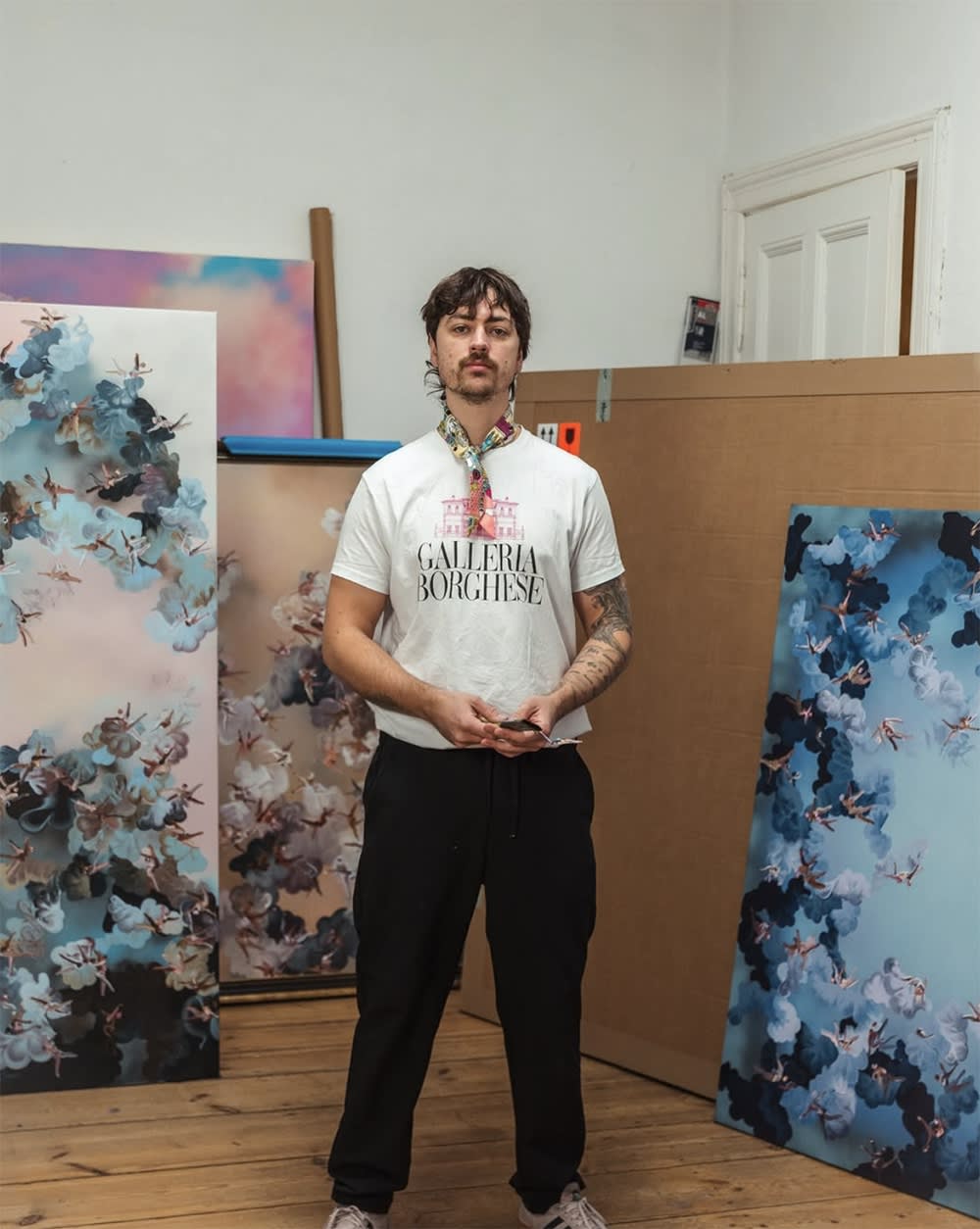
Paul Kuntze in his studio
As a self-taught artist, what drew you to painting and what techniques did you gravitate towards early on?
That’s a bit of a deeper question just because I had some years in my life where I was strongly depressed and had no goals or inspiration in life. In 2019 I began painting. I was curious and from that point on, stoked to create. I started as a total autodidact and tried a lot of different styles and techniques before getting to where I am now.
Are there any specific artists, works, or locations that have played an important role in your development as an artist?
Of course. I would say Willem de Kooning and Cecily Brown have had a big impact in my earlier works. The inspiration and fascination of the frescos comes from many places I’ve visited in the last years, such as Italian palaces and churches and also from seeing works from the masters of that age such as Francois Boucher, or a contemporary, Flora Yukanovich.
How do you feel the abstracted figures and shapes you create lend to your style and message?
These abstract figures are painted totally intuitively. I try to bridge the classical part and concept of ceiling paintings and the contemporary part of intuitive abstract art so it creates some sort of hybrid. I do think this is a fresh approach to recreate the dramatic sceneries into the modern art world.
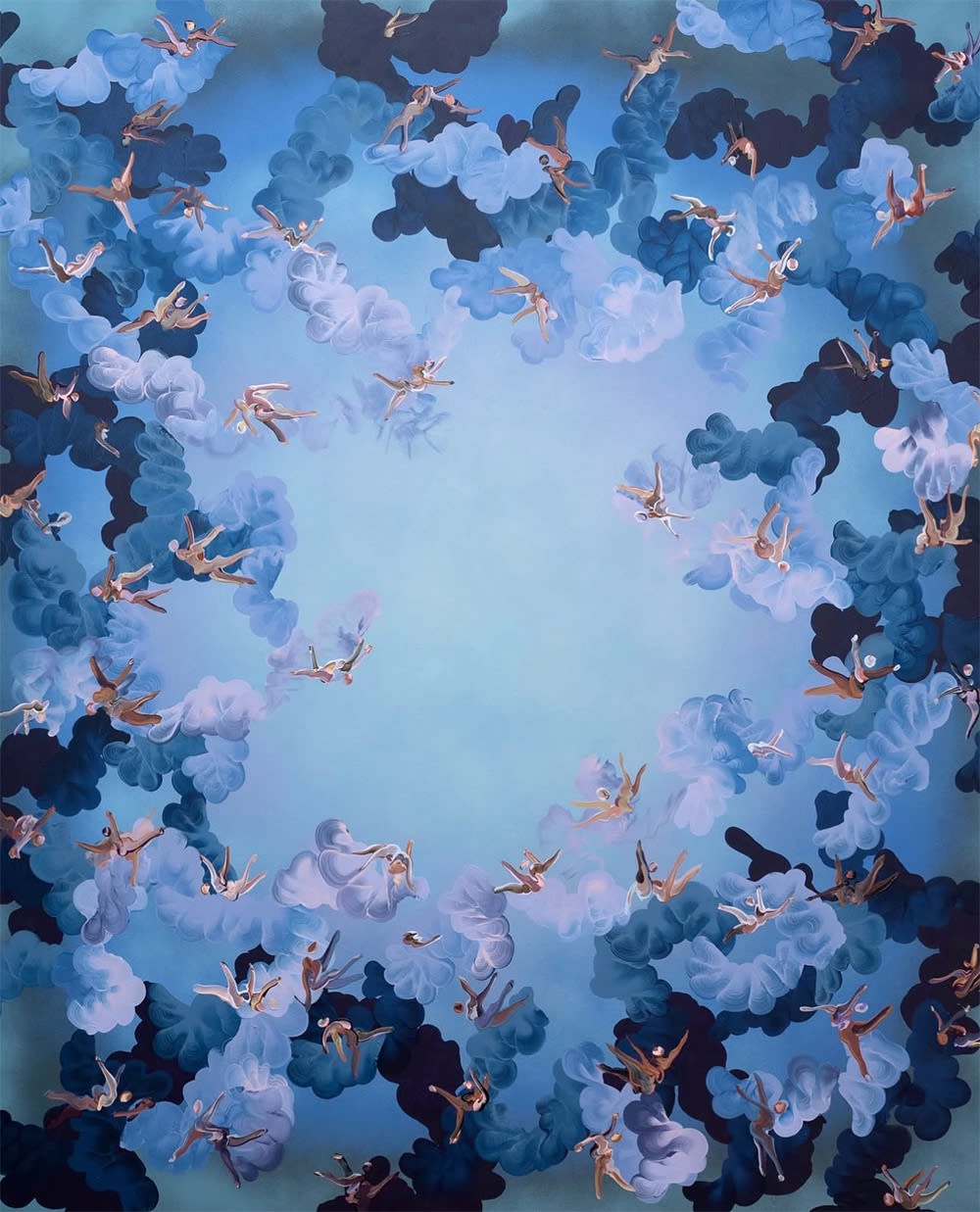
In your “modern frescoes,” how have you gone about blending and balancing Baroque frescos with abstract expressionism?
As I mentioned before, the bridge between baroque and contemporary art is fascinating to me and I try to create something that reminds the viewer of original frescos but with intuitive parts in it, like the figures, to confront the viewers with their own creativity.
When starting a project, which component comes to your mind first—the color, the background, the figures, or something else?
It really depends. Mostly I start with a color scheme for the background which I always spray in multiple layers. This leads to the following layers of clouds and the final layer of the figures. Sometimes I have a special inspiration I want to recreate, for example the color palette from an original fresco that I’ve seen
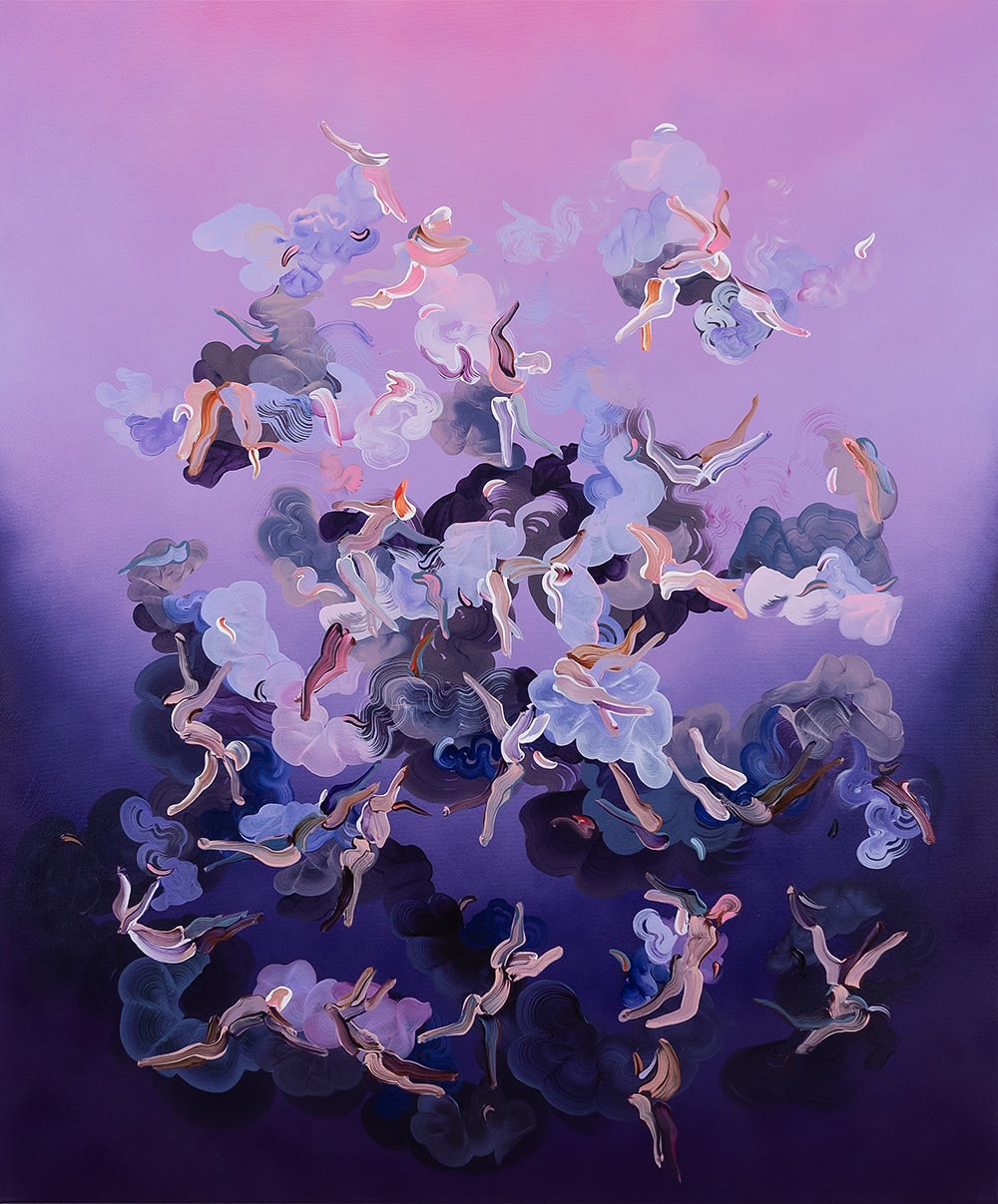
Paul Kuntze, Fresko 47, 2024
How has your style evolved over time? Are there any themes or techniques you would like to explore in the future?
I started with many different styles and evolved a lot over these last couple of years. I’m two years into the Fresko series and am having a lot of fun with it. There is so much more I want to explore in this style of painting and don’t really know what comes after that but I am sure the future holds more for me to discover.
I started in the fields of abstract expressionism where you are totally free in expressing emotions or thoughts without caring about the political or social status. When I started with this series, I wanted to contextualize my works with the theological inspirations of the original frescoes, but I actually want to break the religious context off from my work because the original ceiling paintings are often connoted to a particurlar religion. For me, the original frescoes carry enough meaning from an artistic standpoint, enough to stand on their own, and that’s why I am doing this. But I do also have conversations with viewers of my work who actually are religious and feel deeply connected to my artworks and I definitely love that, too.
Does your abstract interpretation of the aesthetics and emotion of Baroque imagery carry any commentary?
Yes, in my opinion, religion is something society in the past, in referencing the Baroque era, needed more then, than in modern society now. Back then the people had to suffer a lot more and were probably very happy to have something or someone they can pray to. I think our society nowadays is more likely to question the deeper meaning of life without believing in a higher power to explain why we are.
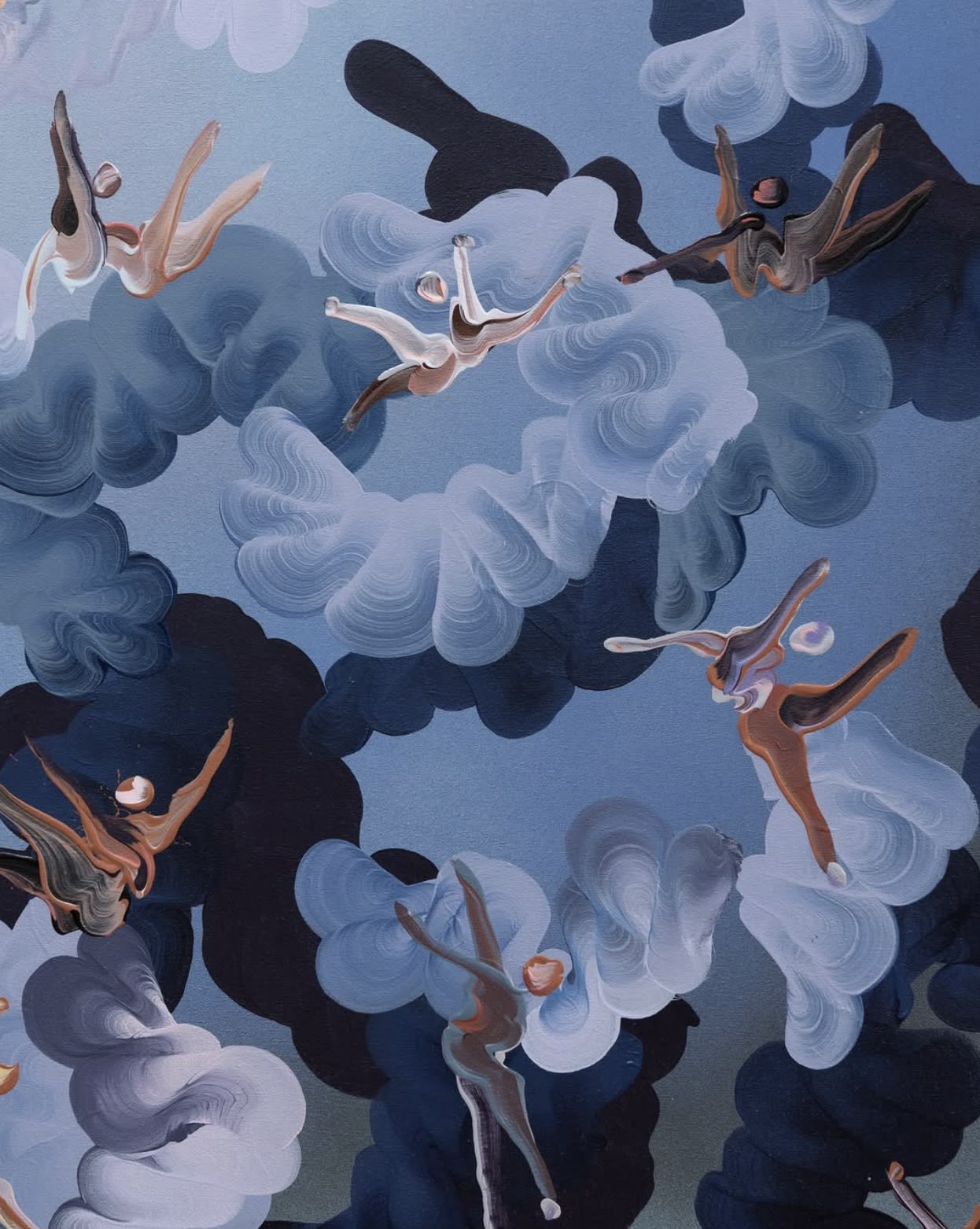
What impression do you hope to give your audience with the intuitive and unrestrained nature of your work?
I hope to let them feel some sort of emotion when looking at my paintings. The most beautiful feedback is when they can see my vision and appreciate that.
Learn more about Paul Kuntze and his available works through the link here
